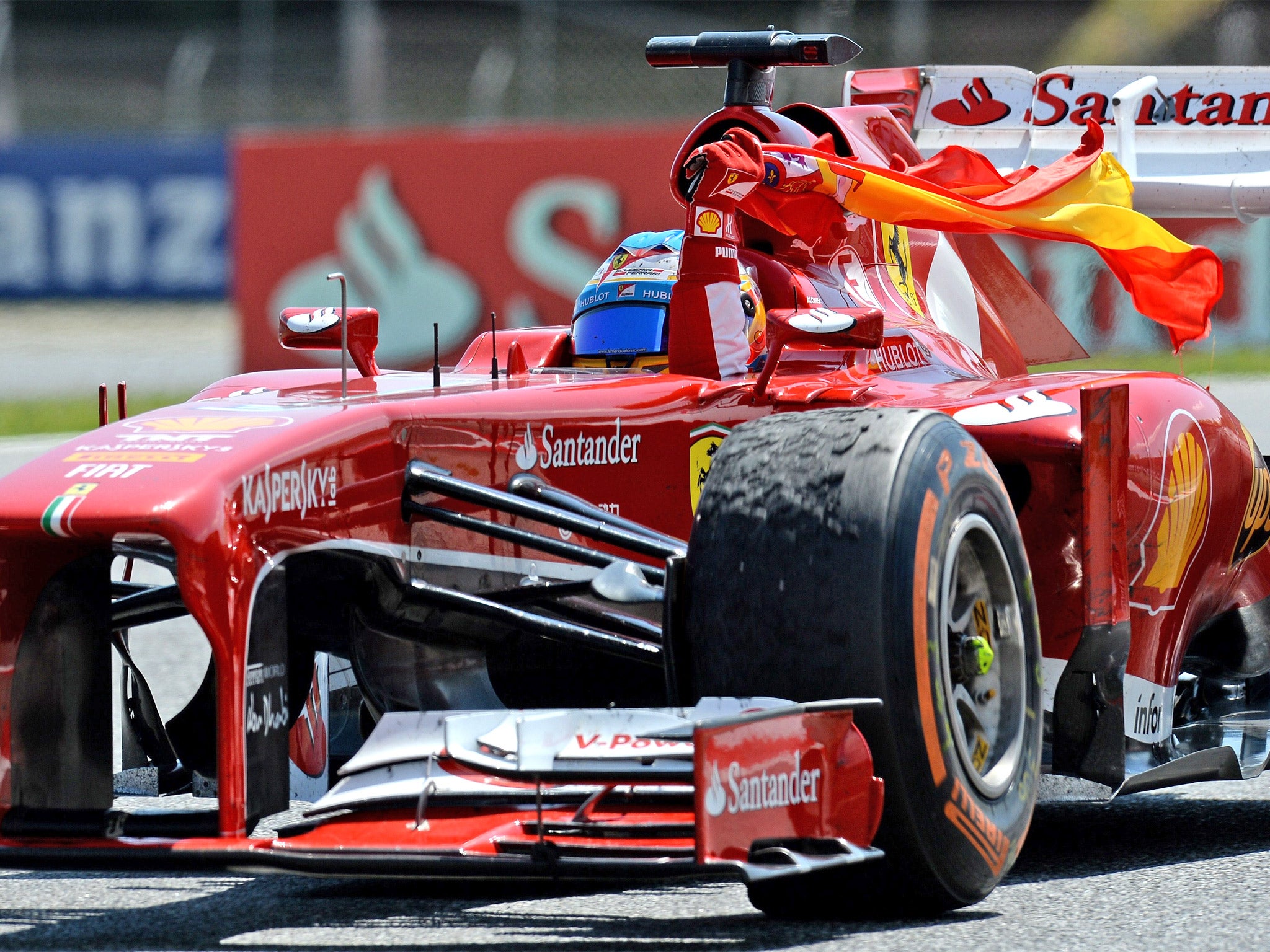Track rage: Why the paddock’s glitterati are losing their grip and calling for tyre change

Your support helps us to tell the story
From reproductive rights to climate change to Big Tech, The Independent is on the ground when the story is developing. Whether it's investigating the financials of Elon Musk's pro-Trump PAC or producing our latest documentary, 'The A Word', which shines a light on the American women fighting for reproductive rights, we know how important it is to parse out the facts from the messaging.
At such a critical moment in US history, we need reporters on the ground. Your donation allows us to keep sending journalists to speak to both sides of the story.
The Independent is trusted by Americans across the entire political spectrum. And unlike many other quality news outlets, we choose not to lock Americans out of our reporting and analysis with paywalls. We believe quality journalism should be available to everyone, paid for by those who can afford it.
Your support makes all the difference.Q: Why have tyres become the hot topic in F1?
A: After Sunday’s Spanish GP clocked no fewer than 82 pit stops, suppliers Pirelli admitted it is considering further changes to its tyres. When the manufacturer took over from Bridgestone as F1’s official tyre supplier in 2011, their brief was to make shorter-life tyres as a way of spicing up races. This brought positives – namely that for the first time in history the opening seven races in 2012 were won by different drivers – but it also confused teams as they struggled to understand the tyres in different situations.
Q: OK, is that all that has changed?
A: No, this year Pirelli was more adventurous with their “made-to-degrade” tyres. There are four types: hard, medium, soft and supersoft, with hard being the most durable but slowest in performance, and supersoft providing the best performance but quickest to wear down. Viewers can even tell them apart. Hards have orange bands around them; the mediums are white; the softs yellow and the supersofts red. Under FIA rules Pirelli bring two dry weather compounds to each race, which they choose beforehand depending on the expected environment.
Q: The drivers’ moaning still seems a bit full-on?
A: Not really. Sunday’s GP at the Circuit de Catalunya provided a prime example of how the differing tyres can lose drivers. Mercedes’ Lewis Hamilton, who started on the front row, finished in 12th, and afterwards admitted he was confused as to which tyres to use. Sebastian Vettel, who only managed fourth place, said: “We are not going to the pace of the car, we are going to the pace of the tyre.” The bottom line? Some drivers believe the tyres are creating a false situation.
Q: How much difference does that make?
A: Drivers are increasingly being required to race to the limits of their tyres, rather than the limit of their own ability. Ordinary tyres usually wear in a linear fashion, but when F1 tyres reach their wear limit, as often happens with these quick-degrading Pirelli tyres, the performance can drop off instantly – “dropping off a cliff” as drivers call it. The characteristics of the current tyres make it hard even for the smoothest drivers, such as Jenson Button, to nurse them once they’ve reached the limit of their deliberately short life.
Q: Can Pirelli really do anything about it?
A: That’s unclear, and if changes are made they are not likely to be implemented until the British Grand Prix in late June. Even if there are alterations to reduce pit stops, it could anger some teams while satisfying others – Vettel’s Red Bull have been the most vociferous critic of the tyres.
Sunday’s race saw only two of the topline drivers, Kimi Raikkonen and Jenson Button, restrict themselves to three stops. Afterwards, Pirelli motorsport director Paul Hembery said: “We aim for two to three pit stops in races and it was just too aggressive today with four.”
Join our commenting forum
Join thought-provoking conversations, follow other Independent readers and see their replies
Comments